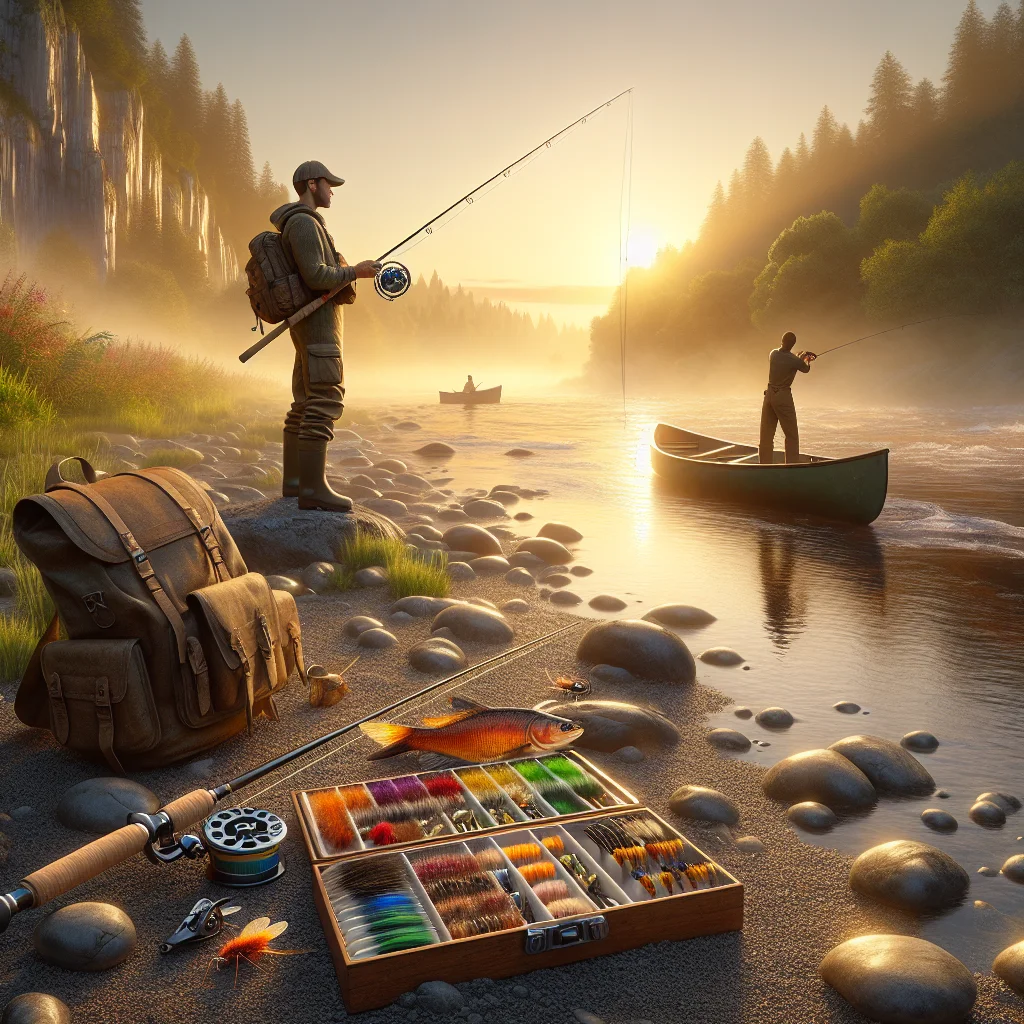Techniques for Success in River Fishing This Year
May 02, 2025

Fishing in rivers can be a thrilling endeavor, offering unique challenges and rewards. In 2025, as anglers navigate varying conditions and evolving fish behaviors, mastering specific techniques can significantly improve your chances of success. Whether you're a seasoned river angler or a novice looking to hone your skills, here’s a comprehensive guide to effective river fishing techniques this year.
Understanding River Dynamics
Rivers are dynamic bodies of water, with varying flow rates, depths, and structures. Understanding these elements is crucial for targeting fish effectively. Factors such as the season, weather, and time of day play pivotal roles in fish behavior. For instance, fish tend to be more active during early morning and late afternoon when temperatures are cooler.
Current and Structure
Focus on understanding how the current affects where fish will be located. Fish often seek out structure—like rocks, fallen trees, and undercut banks—where they can conserve energy against the current. Mapping out these structures will increase your chances of finding fish. Use polarized sunglasses to reduce glare and spot underwater structures more effectively.
Seasonal Patterns
Different seasons bring about different behaviors in fish. In spring, many species spawn, while in summer, fish often seek cooler, deeper waters. In fall, look for fish returning to shallower waters to feed and prepare for winter. Knowing these patterns helps you adapt your techniques accordingly.
Essential Techniques for River Fishing
In 2025, many anglers have optimized their approaches to river fishing. Here are several essential techniques to consider:
1. Drift Fishing
Drift fishing is particularly effective for catching species like trout and steelhead. It involves casting your line upstream and allowing your bait to drift naturally with the current. Use light tackle and natural bait—such as worms or minnows—to entice fish. Monitor your line to ensure you maintain a natural drift.
2. Casting and Retrieval
Using lures effectively requires finesse. Try varying your retrieval speed with lures like spinners or jigs to see what piques the fish's interest. A slow roll may work better in cooler waters, while a quicker retrieve can be effective in warmer conditions. Test different types of lures, such as topwater, crankbaits, and spoons, depending on the time of day.
3. Fly Fishing Techniques
Fly fishing in rivers has gained popularity due to its challenge and elegance. Mastering the roll cast or the double haul can significantly improve your presentation. Focus on matching your fly to the local insect hatch and use a drag-free drift to fool the fish into biting.
4. Weight Placement
When using live bait or lures, consider weight placement to ensure your offering stays in the strike zone. For bottom fishing, use a split-shot or egg sinker to help your bait reach the bottom, while avoiding too much weight that could inhibit the natural presentation.
Selecting the Right Gear
Your choice of gear can greatly impact your success in river fishing. Here’s a breakdown of essential equipment:
Rod and Reel
Choose a lightweight rod for moderate currents and a medium action rod for heavier streams. A spinning reel is ideal for versatility, but a baitcasting reel may provide better control in tighter spots.
Line and Tackle
Use a monofilament or fluorocarbon line for good sensitivity and low visibility. Additionally, have a selection of hooks, weights, and terminal tackle on hand to adapt to various conditions.
Baits and Lures
Utilize live baits such as minnows, worms, or crayfish, which are effective in enticing local species. For lures, opt for colors that mimic the natural prey found in your fishing location, and vary your choice based on the time of year.
Safety Considerations
Fishing should not only be about catching fish but also ensuring your safety. Always wear a life jacket, especially in fast currents, and be cautious of slippery rocks. Staying aware of your surroundings and local wildlife is also essential, as rivers often host insects and wildlife.
Conclusion
Mastering river fishing techniques in 2025 involves understanding the unique dynamics of rivers and adapting your approach based on seasonal patterns, fish behavior, and local conditions. With the right equipment and thoughtful strategies, you can elevate your fishing experience. Continue to observe and learn from your environment, and you will find that both your skills and your catch improve over time. Whether you are fishing for recreation or competition, the river offers endless opportunities for adventure and success.
Back